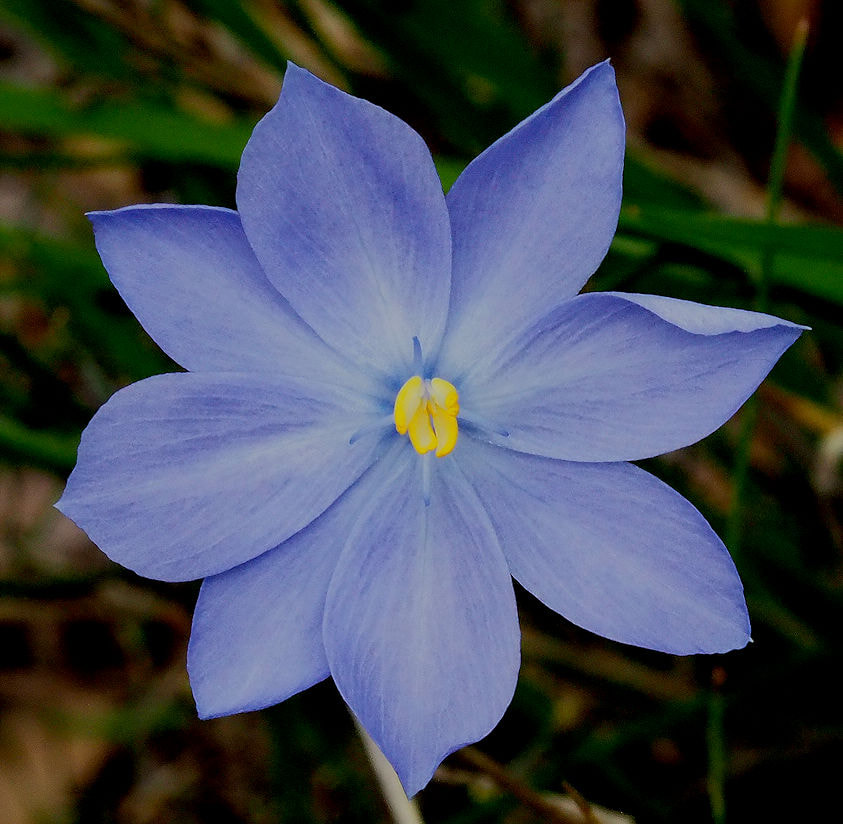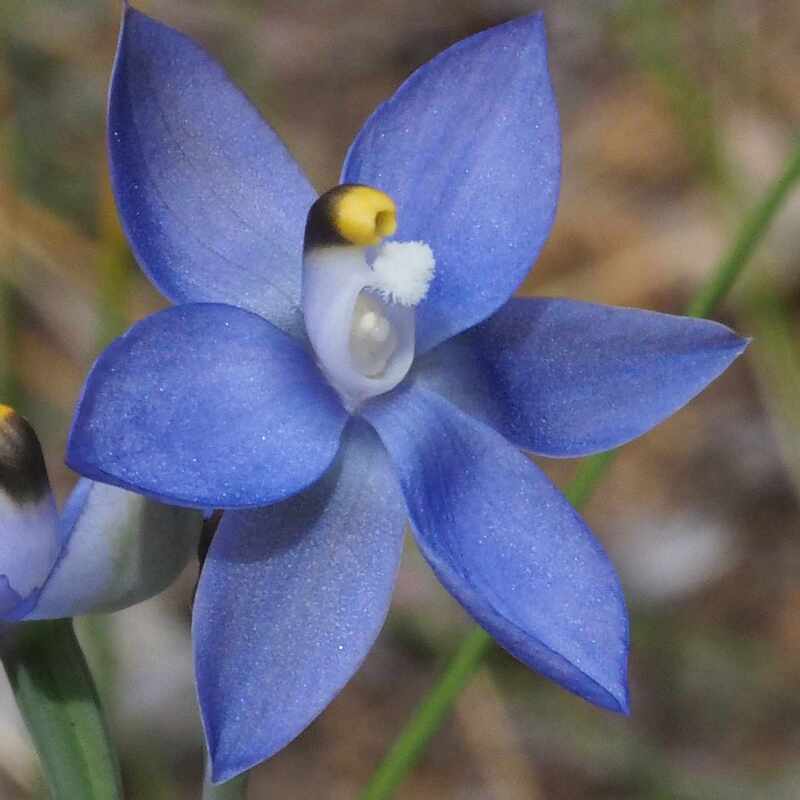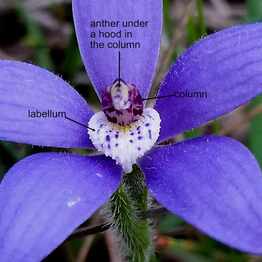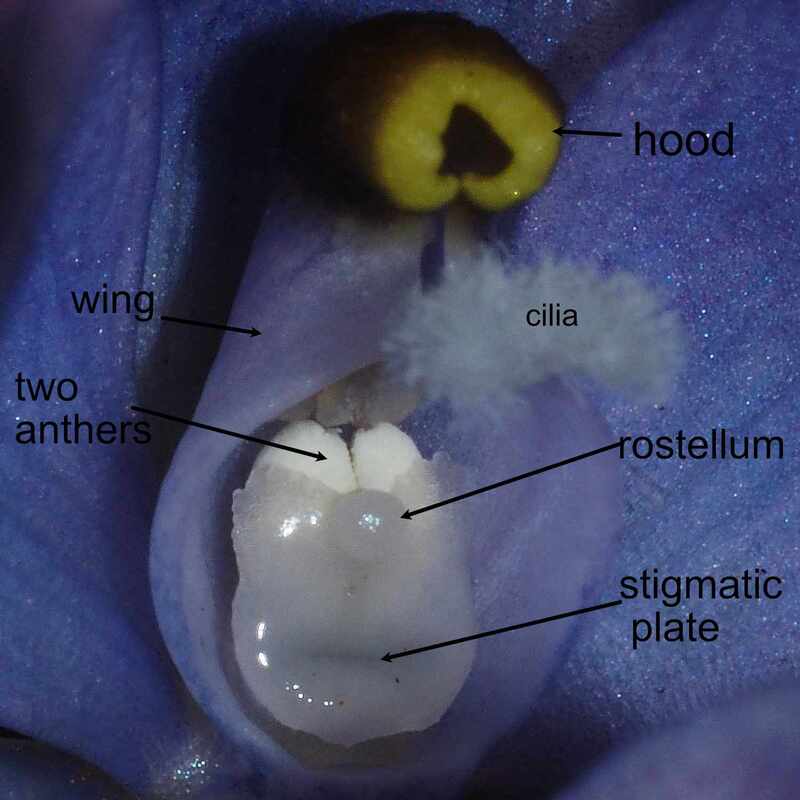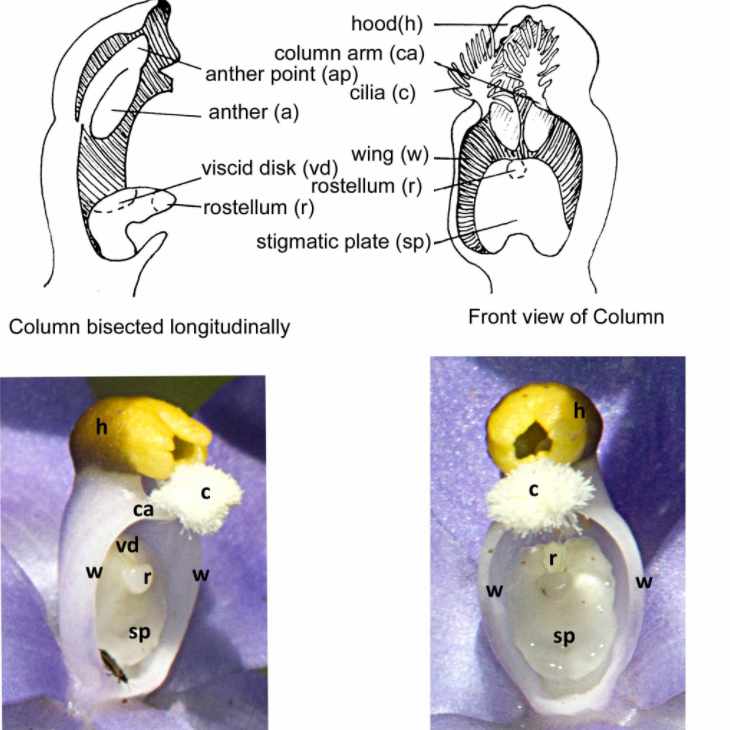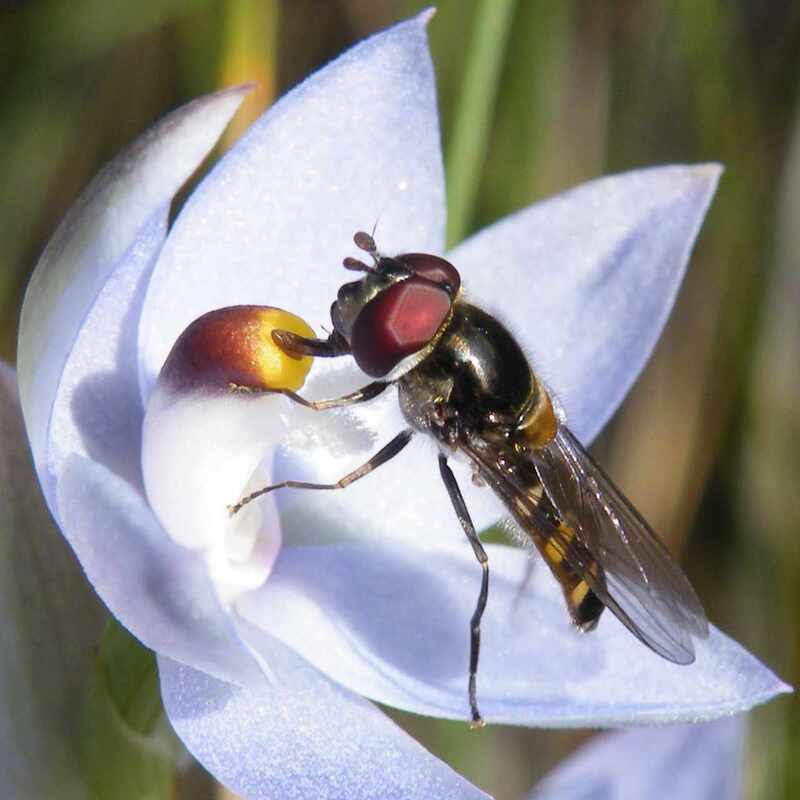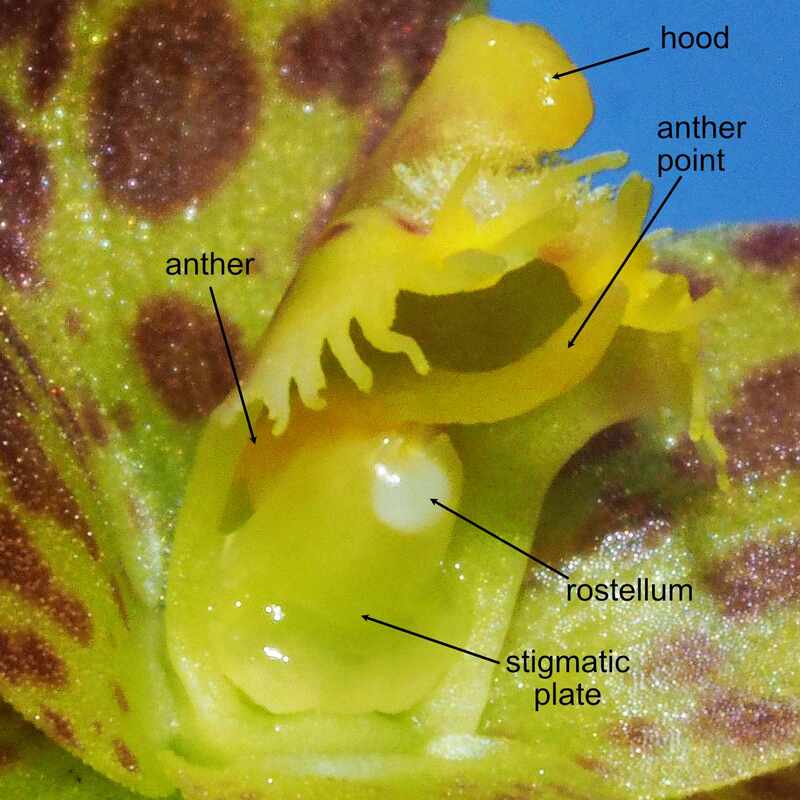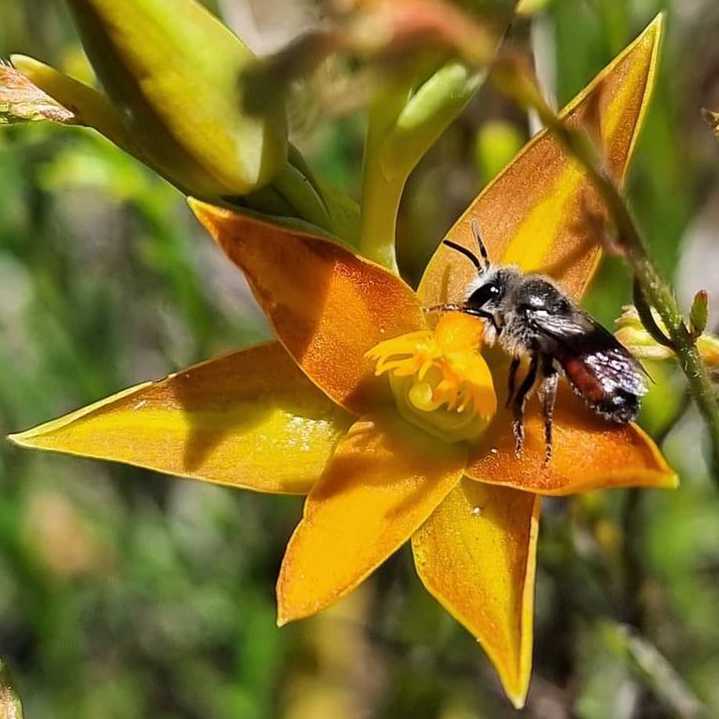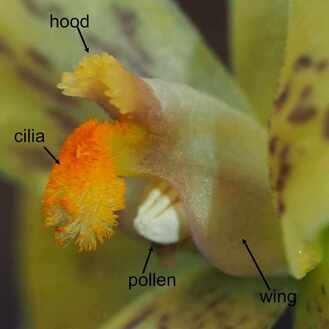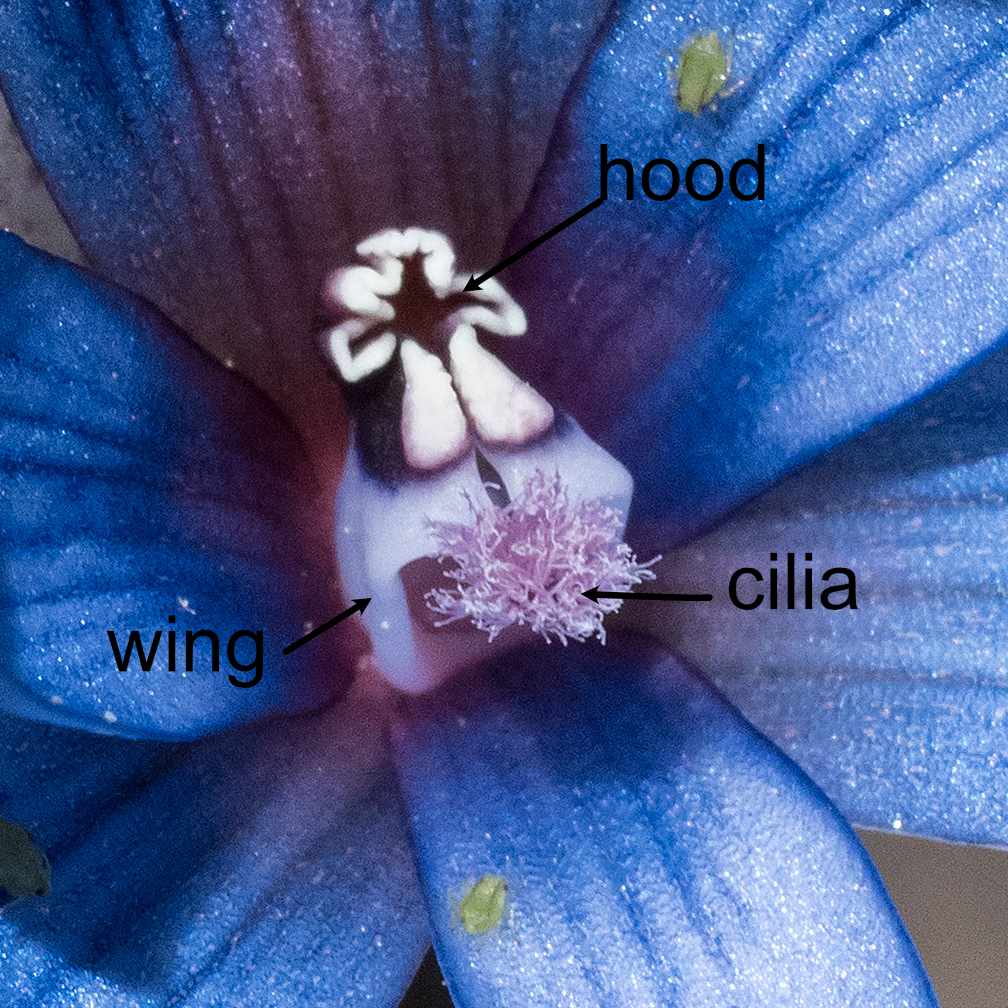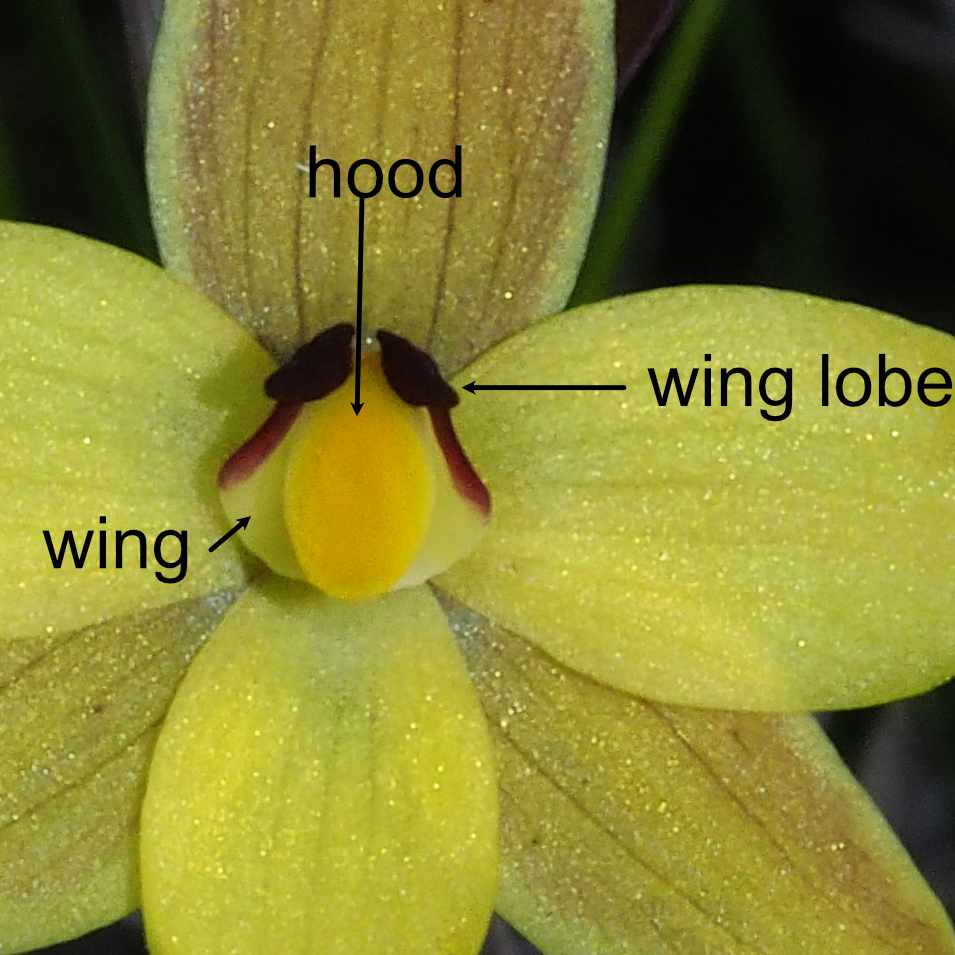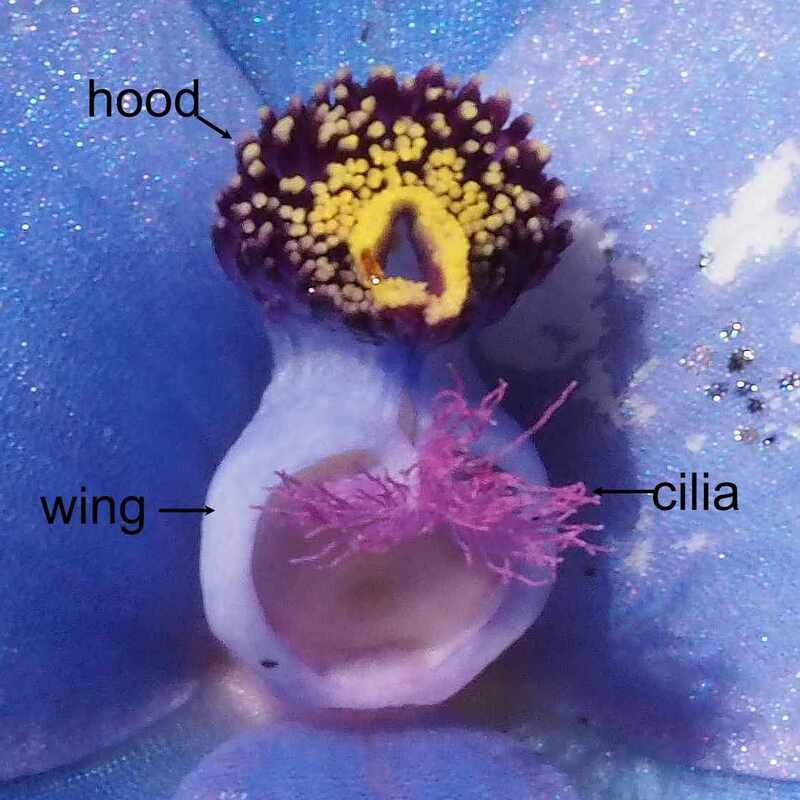I have been into Thelymitra/sun orchid flowers lately.
Sun orchids have normal petals and sepals like many other flowers. When a Foxes Lair visitor found it difficult to believe that they were orchids, I couldn’t give a simple answer why. It is the fused pistil-stamen structure called the column, but simple it is not, and discovering why was a real journey for me!
The image below shows male (stamens) and female (pistil) parts of a fairly typical Ixia lily.
Most orchids aso have a modified bottom petal called a labellum, which acts as a landing ramp and an insect attractor.
Pollinators are led up the labellum to the stigmatic plate. In doing so they unknowingly collect pollen by rubbing against the anthers at the top of the column, and drop pollen that they accumulated from another orchid.
Blue,cowslip, and sun orchids do not suppy pollen or nectar for pollinators. They rely on visual deception by resembling flowers such as lilies and hibbertias which do.
One would think it would be easier to supply a bit of nutrition. Perhaps the energy saved from being stingy gives them an edge in very dry seasons. Some produce a scent, most don’t.
After many hours pondering over the structure of a sun orchid column, I realised that the shape is a compensation for the lack of a labellum, and designed to entice insects to land directly on the column.
The column has an oval sheath below (wing), which surrounds the anthers and stigmatic plate. It pinches at the top and opens again as a smaller hood, to give the overall shape of a hooded cloak. Thelymitra is derived from Greek words for ‘woman’s hood’
The hood is the most distinctive part of the column, often shaped and coloured like an anther, and having knobs, wings,’ hairs’ and sometimes scent to attract insects. I thought the yellow hood was an anther. It certainly fooled me as well as the hoverfly below (which was too large to pollinate the orchid).
In the wing cavity anthers are separated from the stigmatic plate by a pouch, with a knob on top called the rostrum.
How does it operate? Small pollinating bees would land in the hood area, then tip backward to contact anthers underneath and drop other pollen on to the stigmatic plate.
Apparently, the anthers from insect pollinated plants remain intact and stick to the bee as a unit. Anthers on self-pollinated species break up, allowing pollen to fall down to the stigma plate.
The leopard orchid is the weirdest. In addition to knobs, fringes and cilia, it has a long projection (resembing a priapic little man) called an anther point, which joins the anthers . Leopard orchids are self pollinated, so perhaps bees jiggling the anther point breaks up the anthers to release pollen.The closely related York sun orchid has a similar column. Interesting that the Lasioglossum native bee in the image is attracted to the top of the column
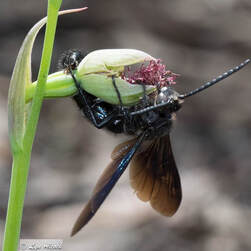 Wasp trying to mate with a beard orchid. Image Lyn Alcock.
Wasp trying to mate with a beard orchid. Image Lyn Alcock.
Another case in point is the beard orchid, which uses pheromones and a bearded labellum that looks like a female flower wasp to a male. Why bother when the orchid pollinates itself? Perhaps the wasp's frantic probing breaks up anthers, but it seems a bit over the top. Still, that is why nature is so fascinating.
To quote Charles Darwin. 'Evolution doesn't have to be perfect, just good enough'..

